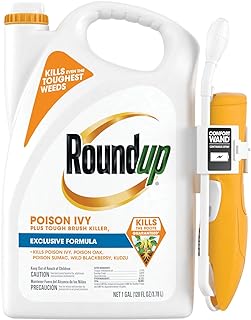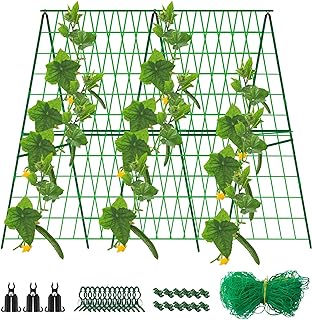5 important factors worth considering when looking for the best clematis plants
When you start gardening and think about adding clematis plants, there are important things to know to make them successful and beautiful. You need to consider the type of soil and how much sun they need. Choosing the right kind of clematis that matches your garden’s look is like painting a picture when you’re growing these lovely vines. Exploring the different aspects of selecting clematis plants shows us how nature and our creative ideas can come together to create something beautiful in the garden.
See our guide to the best clematis plants.
Soil type and pH level
When you buy clematis plants, it’s important to think about the soil they’ll be in. Clematis plants like slightly acidic to neutral soil with a pH between 6.0 and 7.0. This type of soil helps them absorb nutrients well and avoids any shortages. Sandy soil that drains well is good for most types of clematis. But clay soil that’s heavy can stop the roots from growing properly and cause the soil to be too wet. Testing the soil’s pH before planting clematis can help you fix any problems and make a good environment for them to grow.
It’s also important to know how soil type and pH level affect clematis plants so they can grow as best as possible. Different types of clematis may need certain soil types and acidity levels, so it’s smart to look into which ones are right for the soil in your garden. By giving clematis the right soil conditions, they’ll have what they need to thrive and make beautiful flowers year after year. Taking time to prepare the soil well will give you strong and healthy clematis plants that add to the beauty of your outdoor area.
Amount of sunlight needed
Choosing the perfect spot for your clematis plants is important. They need plenty of sunlight to grow well and show off their colorful blooms. A minimum of six hours of direct sunlight each day is best. Sunlight helps the plants grow and makes their flowers stand out in your garden. While some types of clematis can handle a bit of shade, giving them lots of sunlight helps them stay strong and vibrant all season.
It’s crucial to find a good balance of sunlight and shade for your clematis plants. Not enough sunlight can cause weak, spindly growth, fewer flowers, and overall poor health. Too much direct sunlight can burn the leaves and stop the plants from growing properly. By considering how much sunlight your garden gets and picking a spot with the right amount, you set the stage for a beautiful display of clematis flowers that will impress anyone who sees them.
Climbing habit and support requirements
When it comes to clematis plants, their climbing style is a key feature that can add beauty to any garden. Choosing a sturdy support for these vines is important for their health and growth. Investing in strong trellises or structures that can hold the weight of mature clematis plants is necessary to prevent damage and ensure they grow well. Additionally, leaving space between the vines and the support structure helps with air circulation, reducing the chance of diseases and promoting healthy growth.
Selecting the right support for your clematis plants is not just for function, but also for enhancing the look of your garden. Decorative trellises or arbors can give your outdoor space a touch of elegance while providing the support these climbing plants need. It’s important to consider the size and growth patterns of the clematis variety you choose when picking a support. By putting in the effort to plan and choose the right support for your clematis plants, you can create a beautiful vertical display that will impress any garden lover.
Flower color and blooming season
When choosing clematis plants for your garden, the color of the flowers and when they bloom can really impact how your outdoor space looks. Clematis flowers come in many different colors, from bold purples to soft whites, each adding its own charm to your garden. It’s important to pick a variety that blooms at different times, so your garden is always colorful and changing throughout the year.
Matching the colors and blooming times of your clematis plants not only makes your garden look nice but also helps support the environment by providing food for pollinators. This mix of color and seasonality brings more life to your garden, attracting helpful insects and birds. It’s not just about making your garden look pretty, it’s about creating a space that works together with nature, promoting diversity and sustainability.
Pruning requirements
When you’re buying clematis plants, it’s important to know how to prune them so they grow well and bloom a lot. Different types of clematis need different amounts of pruning. Some just need a little trim to make them bushier and have more flowers, while others need more serious pruning to stay healthy and colorful. If you learn about the specific pruning needs of the clematis you pick, you can take better care of them and make them a beautiful part of your garden.
Thinking long-term about the benefits of good pruning can make your outdoor space more interesting. Pruning not only keeps clematis plants healthy, but also makes your garden look better. If you spend time learning and using the right pruning techniques, you’ll have lots of colorful flowers every season. So, when you choose clematis plants, make sure to think about how to prune them, and see how this simple practice can make your garden even more beautiful.
Conclusion
To sum up, clematis plants are attractive because of their beautiful flowers, ability to grow in different conditions, and durability in gardens. They can thrive in different weather and soil types, making them a great choice for any garden. With the right care, clematis plants can bring beauty to your outdoor area for many years, showcasing nature’s remarkable beauty and ability to adapt. Want more info on fde red dot, check the best fde red dot.


